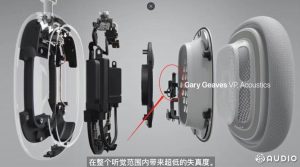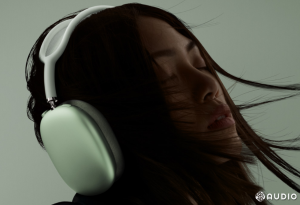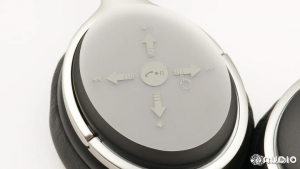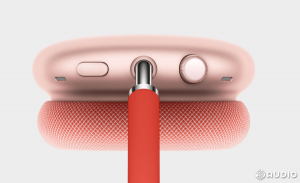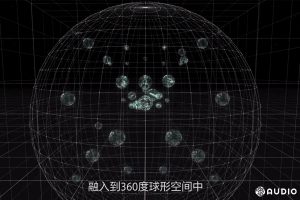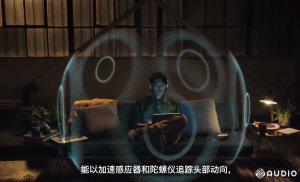2. Bluetooth technology evolution
Bluetooth technology can be said to be another major turning point in the development of headsets. It effectively reduces the constraints of wires on the use of headsets, and laid the foundation for the explosion of TWS true wireless headsets that appeared later.
Bluetooth technology was developed by Ericsson in 1994, and its main purpose is to ban serial data lines. It was officially named Bluetooth in 1997. Because Bluetooth technology replaces the wired input method, it has high requirements for the integration of the internal circuit of the headset and the battery life. Headphones have become their main carrying objects due to their volume advantages.
With the development of Bluetooth technology, basic issues such as Bluetooth power consumption, transmission rate, delay, and connection stability have been continuously optimized. The performance of Bluetooth headsets has been greatly improved. The advantages gradually outweigh the disadvantages and are gradually replacing the status of wired headsets.
In 2020, the Bluetooth SIG (Bluetooth SIG) launched a new generation of Bluetooth audio technology standard-LE Audio. Based on the Bluetooth 5.2 standard, it adopts a new LC3 high-quality, low-power audio decoder; expands the application of Bluetooth technology, supports multiple streaming audio, broadcast audio technology, and can provide strong support for hearing aids. This also provides many interesting directions for future headset functions.
3. Wear detection function
In-ear detection is an innovative feature loved by users in the rapid development of TWS headsets. It relies on the optical sensor to realize the automatic suspension/wearing and automatic playback function of the removal, which effectively improves the user experience and avoids the problem of power consumption when not in use.
Apple AirPods Max supports the wearing detection function. It can be found from the video released by Apple’s official website that it has made holes on the side of the earmuffs. It is speculated that optical sensor components should be used to realize the extraction and automatic suspension of music playback, and the automatic recovery function of wearing. Please also look forward to the follow-up dismantling report of my love audio network for detailed configuration information.
4. Active noise reduction function
The ANC active noise reduction function is a function that has been widely used on headphones in the past two years, bringing a qualitative leap in the experience of using headphones. But in its history, noise-cancelling headsets have been used by pilots in the 1980s and 1990s, and commercial noise-cancelling headset products gradually appeared after 2000.
Active noise reduction technology is one of the main technologies in the modern headphone industry. It mainly collects sounds from the external environment and the internal ear canal through multiple microphones. With a built-in noise reduction chip, the noise is automatically detected. After the internal noise reduction circuit is calculated, the sound waves with the same frequency spectrum and opposite phase are released to cancel out. Remove the original noise, so as to achieve the purpose of noise reduction.
At present, most of the mainstream noise reduction headphones use this technology. The biggest difference is that the noise reduction chip solutions and algorithms used are different in the degree of optimization, as well as the use of the headset material, the degree of wearing fit, etc. difference.
However, as people’s demand for noise reduction effects increases, the purely “one size fits all” noise reduction effect can no longer meet the needs of different scenes. For example, a high-intensity noise reduction effect is required in a noisy environment, but in a relatively quiet environment. The noise reduction effect will produce a dull feeling. Therefore, currently existing models support adaptive noise reduction technology, which can automatically adjust the noise reduction effect according to the use scene, bringing a more comfortable use experience.
Apple AirPods Max headsets are equipped with an Apple H1 chip in the active noise reduction function, and are coordinated with 8 microphones to detect and isolate noise from all directions; and support the environmental sound enhancement transparent mode, which can be used when needed. When you don’t need to take off the headset, you can easily get outside information
5. Interactive experience
In the application of earphone products, pressure-sensitive buttons have already begun to be applied on TWS earphones. The mainstream flagship headsets mainly use tap and touch solutions. By clicking, double-clicking, triple-clicking, long-pressing, sliding up and down, left and right to pause playback, increase and decrease the volume, switch up and down, wake up the voice assistant, etc. .
Compared with physical buttons, touch buttons avoid openings in the appearance of the product, maintain the integration of the product, and are more convenient in blind operation. The disadvantage is that the accuracy is insufficient and false touches may occur phenomenon. Therefore, the pressure-sensitive button that combines the advantages of the two has become the best choice, but there is no pressure-sensitive button solution suitable for wearing Bluetooth headsets at present, waiting for future products.
Apple AirPods Max headsets also use physical buttons in the interactive solution, but compared to other products, Apple AirPods Max only has two buttons to implement all interactive operations. One is the noise reduction mode switch button, and the other is a digital knob similar to Apple Wacth to adjust the volume, switch tracks, answer calls, and activate the voice assistant.
6. Sound effects
The first stereo headset was born in 1958, and then with the development of technology, surround sound was also applied to the headset. Recently, a new spatial audio technology has gradually matured and been pushed into the hands of users. This includes Sony’s 360 live sound effects, innovative technology SXFI holographic audio technology and Apple AirPods’ spatial audio technology.
In layman’s terms, one of the similarities of these three audio technologies is that when we wear headphones to listen to music, we take out the sound of the music we hear in our brains and put them in a fixed position, so that no matter how we move and rotate, The sounds that are heard and felt come from the same place, making it a live sound experience. With the ordinary earphones we use, the sound you feel is in the brain, at most, it is back and forth between the left and right ears.
360 live sound is an audio technology launched by Sony at the 2020 CES International Consumer Electronics Show. It integrates the musical instruments at the concert into a 360-degree spherical space, and reproduces the music on the headset according to the determined distance and angle information. In the immersive music experience to make it feel.
SXFI is able to capture the listening experience of high-end multi-speaker systems in professional studios, and through a sophisticated head-ear model modeling process, it uses calculated audio to tailor a suitable sound for each person, and restore nature in headphones Real sound experience. And through an exquisite head and ear modeling process, a series of complex algorithms and intensive calculations are used to customize their own unique sound effects for each user.
Spatial audio is a feature launched by Apple at the WWDC20 Global Developers Conference. The first Apple AirPods Pro true wireless headset that supports this feature has been adapted to the application. Spatial audio is mainly by adding directional audio filters, fine-tuning the frequency received by each ear, and using acceleration sensors and gyroscopes to track head movement, and analyze it based on the movement data of the relative movement of the head and the screen For example, use scenes such as turning of vehicles and tilting of the aircraft’s fuselage continuously remap the position of the sound field to achieve an immersive audio experience.
These three sound effects experience all give us a brand-new audio experience, but they also have the problem of harsh usage conditions and cannot be fully popularized to users. But in the future, I believe that this audio technology that can effectively improve user experience will come into our lives.

